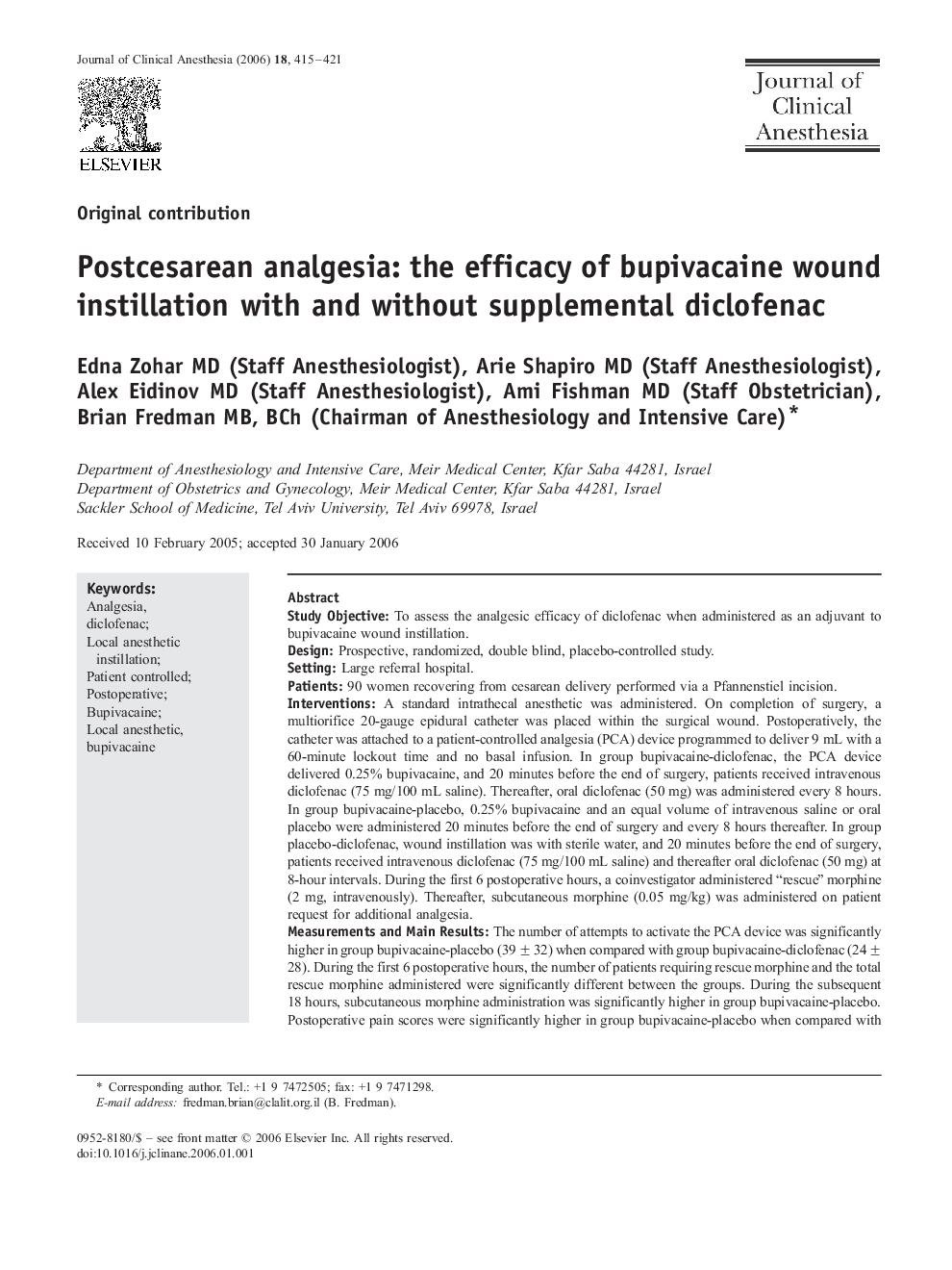| کد مقاله | کد نشریه | سال انتشار | مقاله انگلیسی | نسخه تمام متن |
|---|---|---|---|---|
| 2763817 | 1150767 | 2006 | 7 صفحه PDF | دانلود رایگان |

Study ObjectiveTo assess the analgesic efficacy of diclofenac when administered as an adjuvant to bupivacaine wound instillation.DesignProspective, randomized, double blind, placebo-controlled study.SettingLarge referral hospital.Patients90 women recovering from cesarean delivery performed via a Pfannenstiel incision.InterventionsA standard intrathecal anesthetic was administered. On completion of surgery, a multiorifice 20-gauge epidural catheter was placed within the surgical wound. Postoperatively, the catheter was attached to a patient-controlled analgesia (PCA) device programmed to deliver 9 mL with a 60-minute lockout time and no basal infusion. In group bupivacaine-diclofenac, the PCA device delivered 0.25% bupivacaine, and 20 minutes before the end of surgery, patients received intravenous diclofenac (75 mg/100 mL saline). Thereafter, oral diclofenac (50 mg) was administered every 8 hours. In group bupivacaine-placebo, 0.25% bupivacaine and an equal volume of intravenous saline or oral placebo were administered 20 minutes before the end of surgery and every 8 hours thereafter. In group placebo-diclofenac, wound instillation was with sterile water, and 20 minutes before the end of surgery, patients received intravenous diclofenac (75 mg/100 mL saline) and thereafter oral diclofenac (50 mg) at 8-hour intervals. During the first 6 postoperative hours, a coinvestigator administered “rescue” morphine (2 mg, intravenously). Thereafter, subcutaneous morphine (0.05 mg/kg) was administered on patient request for additional analgesia.Measurements and Main ResultsThe number of attempts to activate the PCA device was significantly higher in group bupivacaine-placebo (39 ± 32) when compared with group bupivacaine-diclofenac (24 ± 28). During the first 6 postoperative hours, the number of patients requiring rescue morphine and the total rescue morphine administered were significantly different between the groups. During the subsequent 18 hours, subcutaneous morphine administration was significantly higher in group bupivacaine-placebo. Postoperative pain scores were significantly higher in group bupivacaine-placebo when compared with those recorded in groups placebo-diclofenac and bupivacaine-diclofenac. Finally, patient satisfaction was significantly lower in group bupivacaine-placebo.ConclusionIn the context of this study, the bupivacaine wound instillation with adjuvant diclofenac administration is associated with similar postoperative analgesia to that induced by diclofenac alone.
Journal: Journal of Clinical Anesthesia - Volume 18, Issue 6, September 2006, Pages 415–421